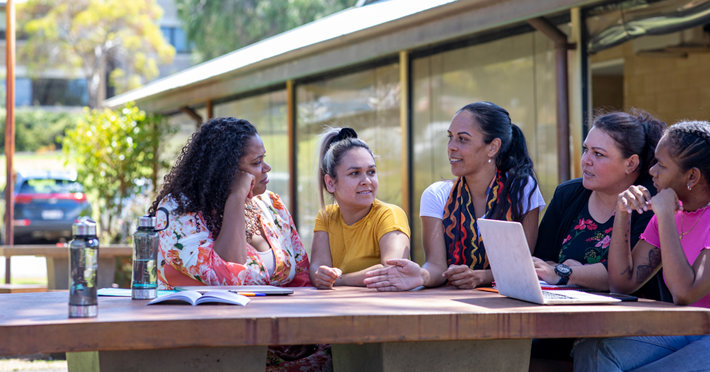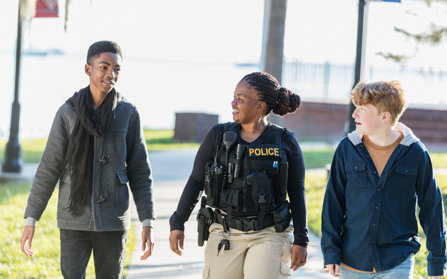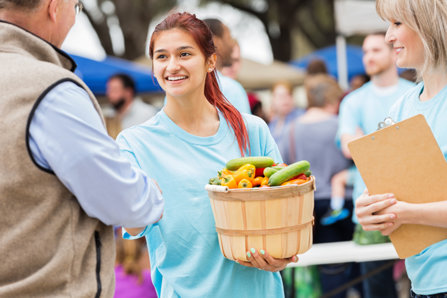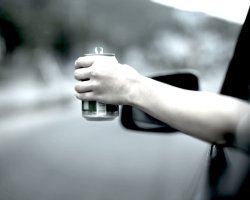Discovering What You Can Do to Prevent Addiction in Your Community

The American family may be the best tool for helping an addict to get into treatment, but it’s the local communities that are best positioned to prevent drug addiction from becoming a problem in the community in the first place. What can local individuals do to ensure that none of their neighbors, friends, coworkers, and community members become addicted to drugs? What can communities do to promote drug-free neighborhoods, towns, cities, and counties?
Several Ways Communities can Take Action to Prevent Drug Abuse
Communities can draw from mutual cooperation and group teamwork to put together drug prevention campaigns, raise awareness, educate community members about drugs, and support local officials in cracking down on drug trafficking. Following are several activities communities can take part in:
1. Implement drug education seminars in schools. Schools offer a huge opportunity for community-level action on preventing drug abuse. Schools could deliver seminars and educational courses to students about the harms and dangers of drugs, which would make students less susceptible to peer pressure from others to use drugs. Schools can also work hand-in-hand with parents to help parents become more educated about drugs, empowering them to be more effective when they have conversations with their children about drugs.
2. Go door-to-door handing out info packets on drugs. Much like community member campaigns in neighborhoods for political causes, nonprofits, youth groups, religious missions, and community members could also go door-to-door informing neighbors about drug dangers and offering free information packets.
3. Host marches, raffles, bake sales, etc. Use these activities to promote and fundraise for drug prevention/treatment efforts. Community-run drug treatment programs, drug trafficking prevention programs, and drug use prevention campaigns can greatly benefit communities.

4. Talk to local law enforcement. Law enforcement agencies usually have information about ongoing drug crime prevention efforts within the community; talk to them and find out what civilians can do to help. Law enforcement officials are often severely understaffed in addressing drug trafficking since they have multiple responsibilities to attend to in order to uphold public peace and safety. Liaising with law enforcement to prevent drug trafficking, such as through a neighborhood watch program, could help prevent drugs from coming into the community.
5. Have discussions with friends and coworkers about drugs. Ensure that your contacts have the correct data on drugs. But rather than just focusing on one’s own family, local individuals should talk to their neighbors, friends, coworkers, and other community members about the harms and dangers of drug use.
6. Work with local leadership. Contact local officials such as the mayor’s office and town council, and try to get the community/town to put out information/PSAs on drug prevention. Community leaders should absolutely be recruited to help organize and even lead drug prevention campaigns.
7. Seek help from major organizations that are already doing things like this, such as MADD, and see if they can send their tools to one’s community or even visit in-person. Such organizations can give seminars, put on events, host marches, contribute to fundraisers, and utilize their resources to help inform and advocate drug prevention within a community.

8. Promote health and wellbeing in other areas of life. Drug abuse does not “just happen.” Communities become prone to drug abuse and crime because of underlying issues that make it more likely that community members would turn to substance abuse as a coping mechanism. Economic disadvantages, familial problems, lack of a social safety net, lack of educational opportunities, scarce good employment options are all problems which can be addressed within a community that can help prevent drug abuse from cropping up among community members.
Talking to Young People; Halting Drug Experimentation Before it Begins
So much of preventing drug abuse in a community begins with ensuring the young people in that community do not experiment with drugs. Community members should take it upon themselves to ensure that young people of all ages, from childhood to well into adulthood, have plenty of meaningful and important activities to do in school, after school, and on the weekends. There should be sports teams, after-school clubs, church groups, volunteer groups, local venues that cater to young people’s interests, and seasonal activities that young individuals can get involved with.
In addition to young people being kept engaged, productive, entertained, and active within the community, community members should also empower parents to talk to their kids about drugs and alcohol. Many parents do not feel well prepared to do this, and while educational seminars and discussions about drugs at school do help, parents are almost always the best individuals to talk to kids about drugs.
Community members should ensure parents have good information about drugs, as well as advice on how to talk to kids about drugs. Resources to get started include:
- The American Academy of Pediatrics
- The Mayo Clinic
- The Partnership to End Addiction
- The National Institute on Drug Abuse
- The National Institutes of Health
- The Help Guide
Spotting Drug Abuse; A Key Skill for Treatment and Prevention

With teamwork and local involvement, a group of community members can make progress towards protecting a neighborhood, community, town, or city from drug abuse. However, another important skill that community members must have in tackling drug abuse is the ability to spot drug use when it does occur.
No prevention efforts will ever be 100% successful, so an important skill in a community’s toolbox is the ability to spot the telltale signs of drug abuse in an individual. This way, an intervention can be staged to encourage that individual to enter treatment.
With that in mind, some of the signs of drug abuse include:
- Bloodshot eyes or dilated pupils. The individual may be using eye drops to try to mask these signs.
- Behavioral changes like skipping class, declining grades, suddenly getting into trouble at school.
- Missing work, not performing well at work, getting fired or demoted.
- Hearing from neighbors or family members that there are inexplainable missing medications, prescriptions, money, or valuables.
- Acting uncharacteristically isolated, withdrawn, angry, or depressed with no real explanation for those behavioral changes.
- Sudden mood changes, sometimes aggressive, often depressed, apathetic, grief-stricken, or anxious.
- Changing friend groups, dropping one group of friends for another, being secretive about the new peer group, or suddenly with a new romantic partner.
- Loss of interest in old hobbies and activities that used to matter quite a bit. Lying about new interests and activities that one is now engaged in.
- Demanding more privacy from family members and loved ones, including locking doors, avoiding eye contact, sneaking around, not being honest about day-to-day activities and where they are going, what they’re doing, or who they’re doing it with, etc.
From community engagement and prevention efforts to spotting the signs of substance abuse to encouraging treatment for those who do become addicted to drugs, individual community members can do a great deal to keep their communities safe from drug abuse.
Sources:
- https://www.healthychildren.org/English/ages-stages/teen/substance-abuse/Pages/Drug-Abuse-Prevention-Starts-with-Parents.aspx
- https://www.mayoclinic.org/healthy-lifestyle/tween-and-teen-health/in-depth/teen-drug-abuse/art-20045921
- https://drugfree.org/article/prevention-tips-for-every-age/
- https://www.drugabuse.gov/publications/drugs-brains-behavior-science-addiction/preventing-drug-misuse-addiction-best-strategy
- https://newsinhealth.nih.gov/2017/06/dealing-drug-problems
- https://www.helpguide.org/articles/addictions/drug-abuse-and-addiction.htm#


 ®
®